Abstract
Animals that are primarily dependent on olfaction must obtain a description of the spatial location and the individual odor quality of environmental odor sources through olfaction alone. The variable nature of turbulent air flow makes such a remote sensing problem solvable if the animal can make use of the information conveyed by the fluctuation with time of the mixture of odor sources. Behavioral evidence suggests that such analysis takes place. An adaptive network can solve the essential problem, isolating the quality and intensity of the components within a mixture of several individual unknown odor sources. The network structure is an idealization of olfactory bulb circuitry. The dynamics of synapse change is essential to the computation. The synaptic variables themselves contain information needed by higher processing centers. The use of the same axons to convey intensity information and quality information requires time-coding of information. Covariation defines an individual odor source (object), and this may have a parallel in vision.
Full text
PDF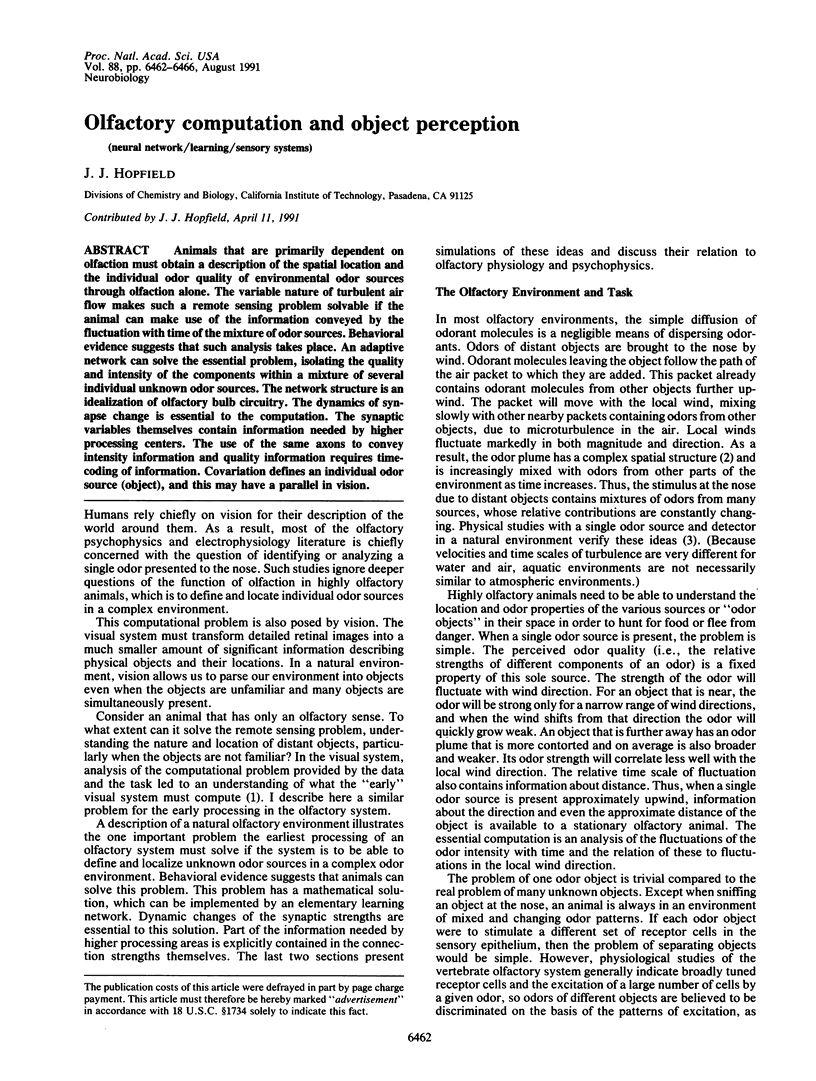
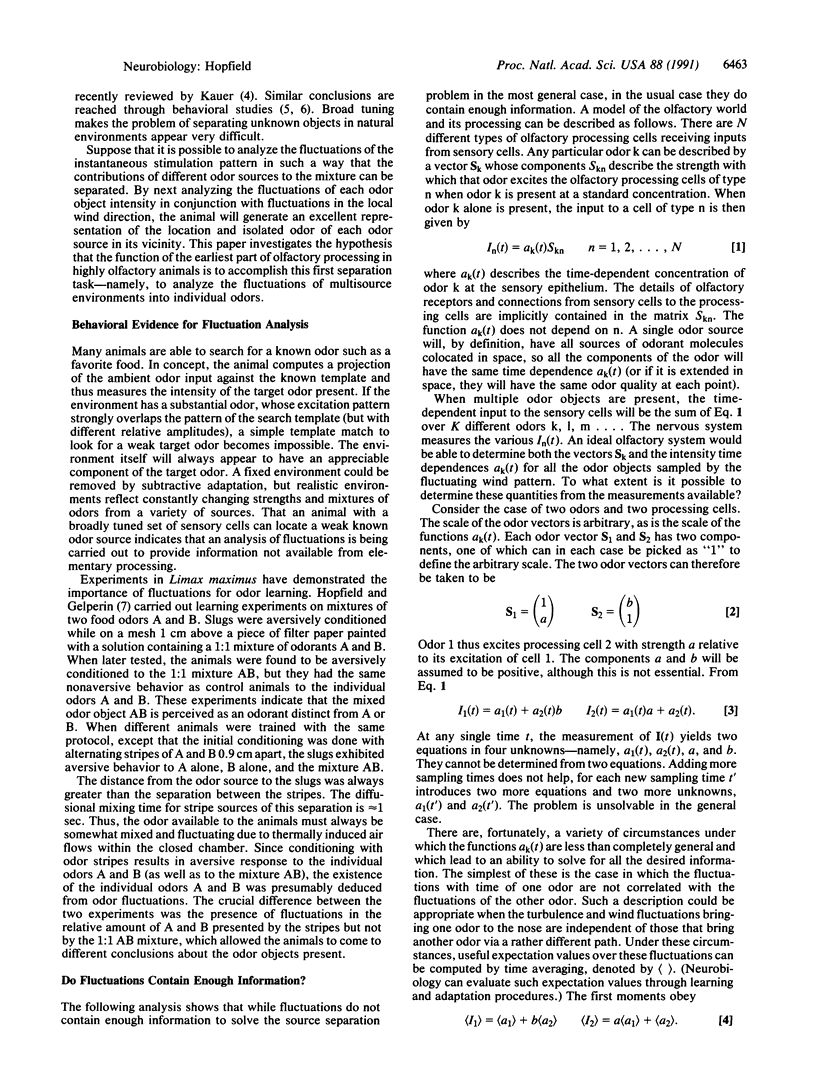
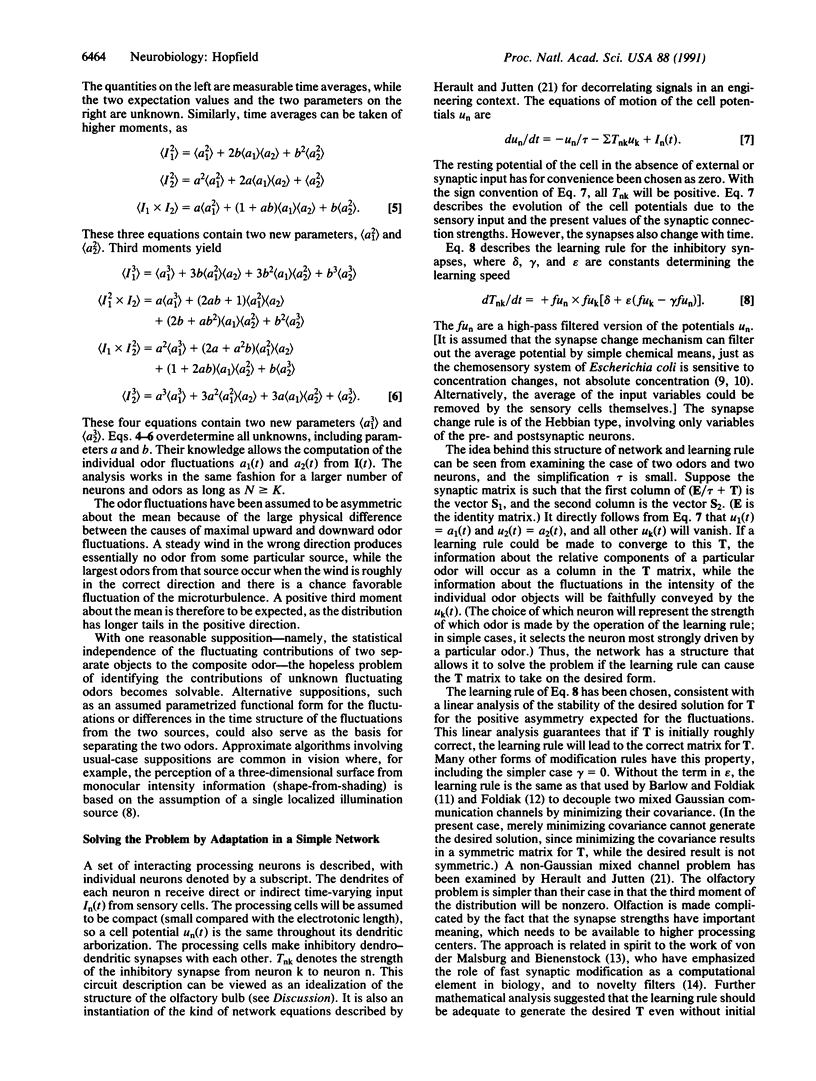
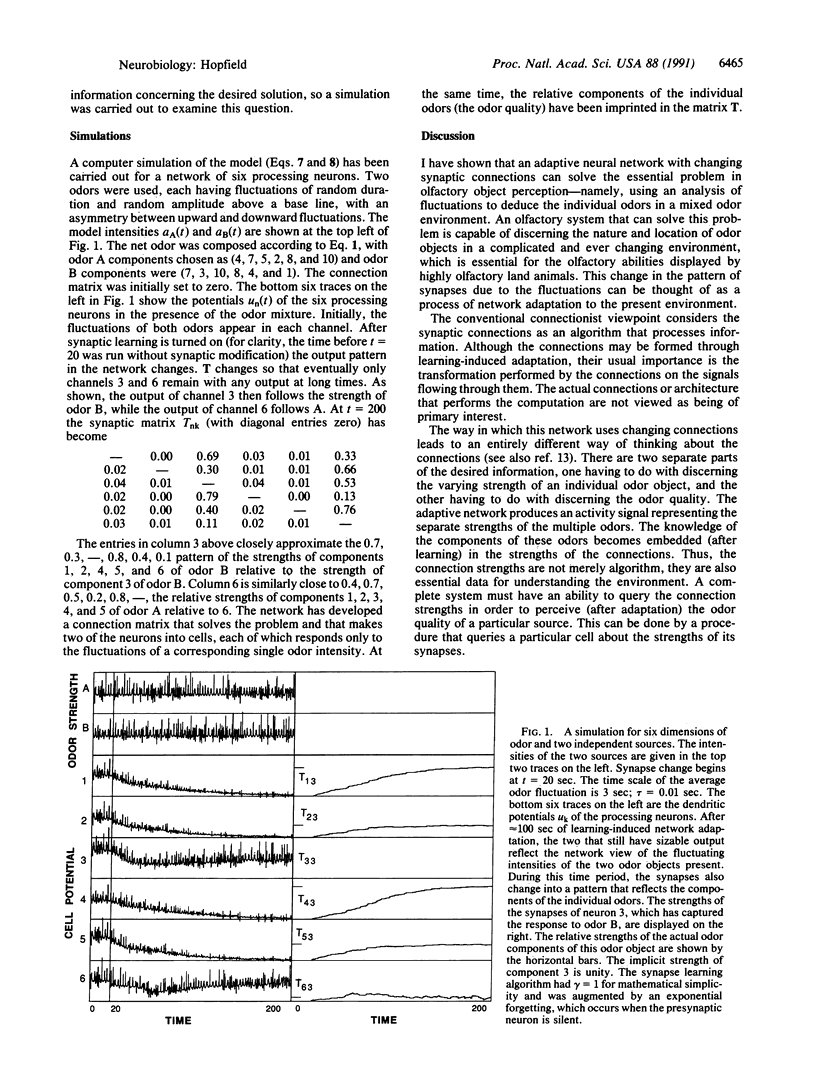
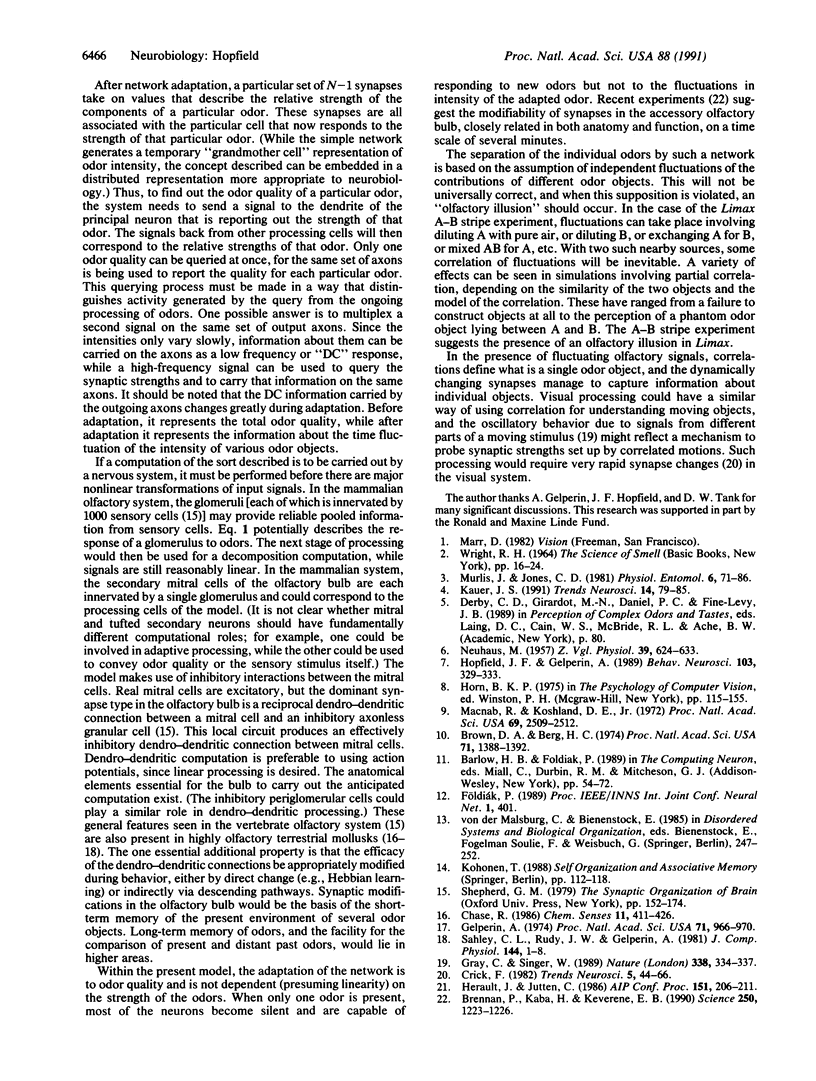
Selected References
These references are in PubMed. This may not be the complete list of references from this article.
- Brennan P., Kaba H., Keverne E. B. Olfactory recognition: a simple memory system. Science. 1990 Nov 30;250(4985):1223–1226. doi: 10.1126/science.2147078. [DOI] [PubMed] [Google Scholar]
- Brown D. A., Berg H. C. Temporal stimulation of chemotaxis in Escherichia coli. Proc Natl Acad Sci U S A. 1974 Apr;71(4):1388–1392. doi: 10.1073/pnas.71.4.1388. [DOI] [PMC free article] [PubMed] [Google Scholar]
- Gelperin A. Olfactory Basis of Homing Behavior in the Giant Garden Slug, Limax maximus. Proc Natl Acad Sci U S A. 1974 Mar;71(3):966–970. doi: 10.1073/pnas.71.3.966. [DOI] [PMC free article] [PubMed] [Google Scholar]
- Gray C. M., König P., Engel A. K., Singer W. Oscillatory responses in cat visual cortex exhibit inter-columnar synchronization which reflects global stimulus properties. Nature. 1989 Mar 23;338(6213):334–337. doi: 10.1038/338334a0. [DOI] [PubMed] [Google Scholar]
- Kauer J. S. Contributions of topography and parallel processing to odor coding in the vertebrate olfactory pathway. Trends Neurosci. 1991 Feb;14(2):79–85. doi: 10.1016/0166-2236(91)90025-p. [DOI] [PubMed] [Google Scholar]
- Macnab R. M., Koshland D. E., Jr The gradient-sensing mechanism in bacterial chemotaxis. Proc Natl Acad Sci U S A. 1972 Sep;69(9):2509–2512. doi: 10.1073/pnas.69.9.2509. [DOI] [PMC free article] [PubMed] [Google Scholar]


